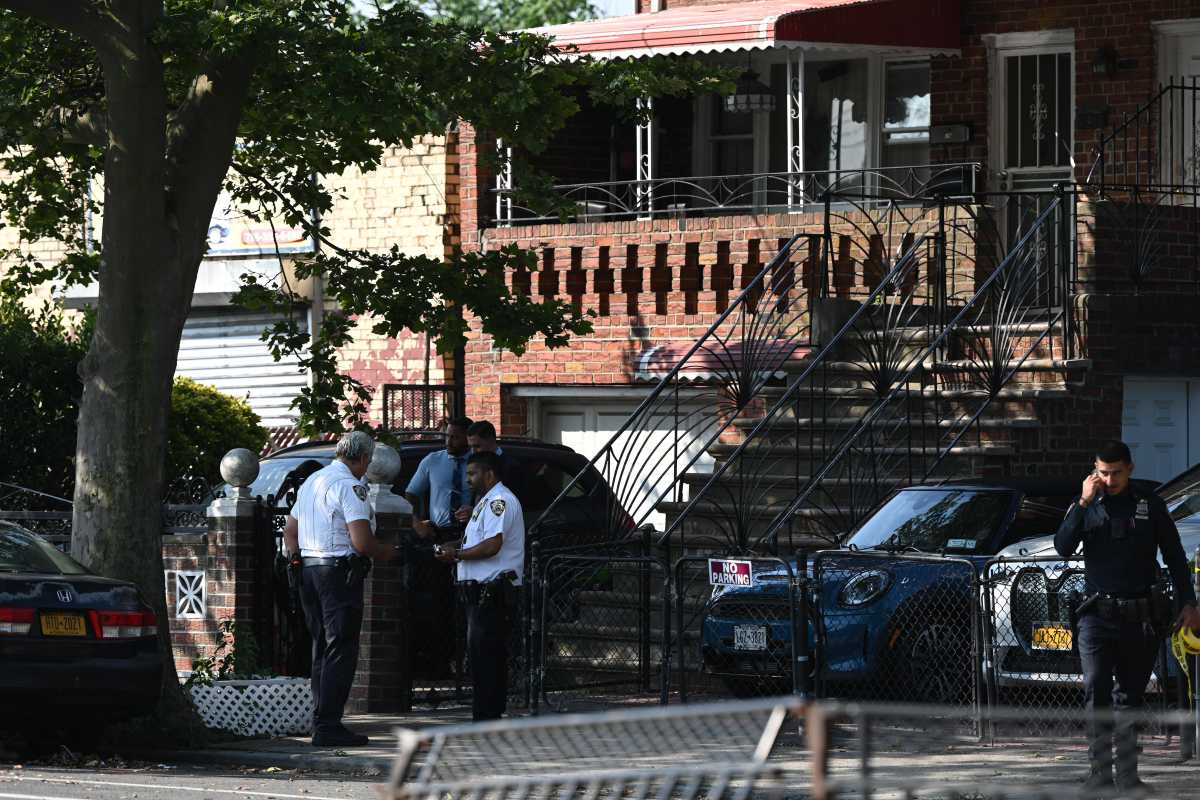A Community Board 6 committee this week threw its support behind a series of applications that would legalize the construction ofa massive Carroll Gardens residential development.
The Clarett Group’s project, called the Collection at Court Street will now require the blessing of the full board, which meets Jan. 13, and ultimately, the city’s Board of Standards and Appeals (BSA), which has official say over the matter.
After the neighborhood was rezoned in October, the city slapped a stop work order on the site, as its construction no longer conformed to the existing zoning — a slight technical deviation that triggered a public review.Previously, the project did not require any special approvals.
In order to move ahead, the developer must have the BSA vest permits it had previously been granted. The project, which calls for the construction of aseven-story condominium and eleven four-story town homes, remains essentially as it was when initially proposed. Buildings of the heights proposed in the Collection are allowed, even under the new zoning for the area.
“We knew our project was pretty much in conformance with the new zoning,” said Eric Deutsch, Clarett’s managing director.Once his firm knew it had to go through the BSA, it held a series of meetings with elected officials, community board members and the local block association to demonstrate that the project is not being changed from what was originally unveiled to the public in 2008. “We wanted to make sure that before we filed with BSA, everyone is aware of what we were doing and not doing.”
At the Jan. 4 meeting, the matter passed the Landmarks/Land Use Committee,— which has been known to deliberate for hours on far smaller projects — at breakneck speed. “The variation was so small,” said committee member Jerry Armer. “What are you going to do, ask them to shave off a foot here or there?”
Maria Pagano, president of the Carroll Gardens Neighborhood Association, said her group has never had Clarett’s ear. “We would like to have more of an impact and to be able to sit down with them and have them recognize the community concerns,” she said. Chief among them, being the sheer bulk of the project, as well as the color of building exteriors, which at one time was an industrial slate gray. Since the plan’s initial introduction, Pagano said, the firm has refused to show any renderings or drawings, further alienating locals.
But Deutsch said his firm has simply not updated the renderings. “We were focussed on getting the building permitted,” he said. “We strongly believe we have informed everyone as to the makeup, size and density of the buildings,” he added. As for the exterior, Deutsch said, “we have been looking at lighter colors.”
The BSA will hold a hearing on the matter on Jan. 26. If the panel approves the applications, Deutsch said activity on the site will resume once the real estate credit market thaws. “We hope to get the construction of the project started as soon as possible, and in order to do so, we will need the real estate capital markets to come back to health,” he said. “When the market returns, it will return to prime locations, like this one.”
The 106,000-square-foot property was sold in 2007 by Long Island College Hospital for $23.75 million. The site was once home to the headquarters of the International Longshoremen’s Association.





















